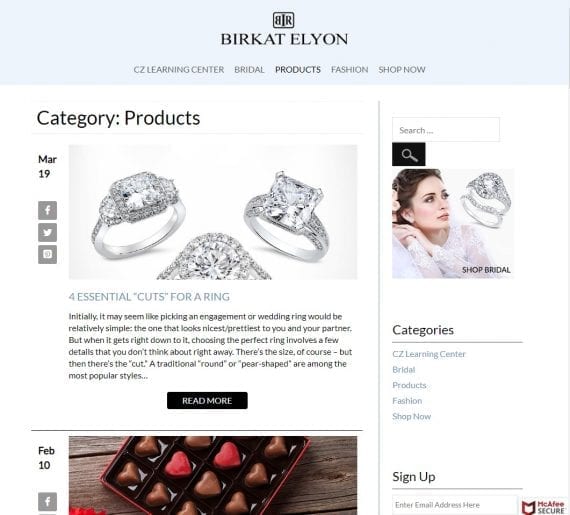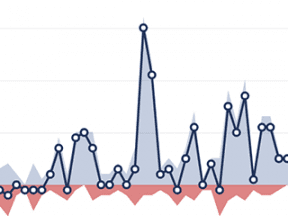Modern search engine optimization relies on providing valuable content that improves a site’s customer experience. But the form it should take often stymies site owners.
The mention of content to ecommerce marketers often conjures images of cramming useless words into category pages, which pushes the products they’re selling out of a shopper’s’ view. But there are many creative options for providing valuable content that drives traffic.
Content creation isn’t just for big brands with deep pockets. The six sites below prove that any ecommerce site can create valuable content that appeals both to shoppers and the search engines that send them.
Blogs
Blogs give searchers alternate ways to find a brand through topics that are related to the company’s products. For example, the post above by cubic zirconia jeweler Birkat Elyon educates shoppers on the shapes of engagement ring stones that will stand the test of time.
As a lifestyle blog, not all of the posts are product-related. This humanizes the brand. For example, a nervous bride or groom might wonder whether she or he is ready to get married or worry that her beloved is allergic to an equally beloved pet. Ranking for posts such as these can introduce shoppers to your brand who may not have been thinking about buying jewelry — but will at some point.
I sometimes hear, “I tried blogging, and it didn’t work.” But a glance at the content usually tells me why. What you write about makes all the difference. Address topics that shoppers value.
Educational Resources
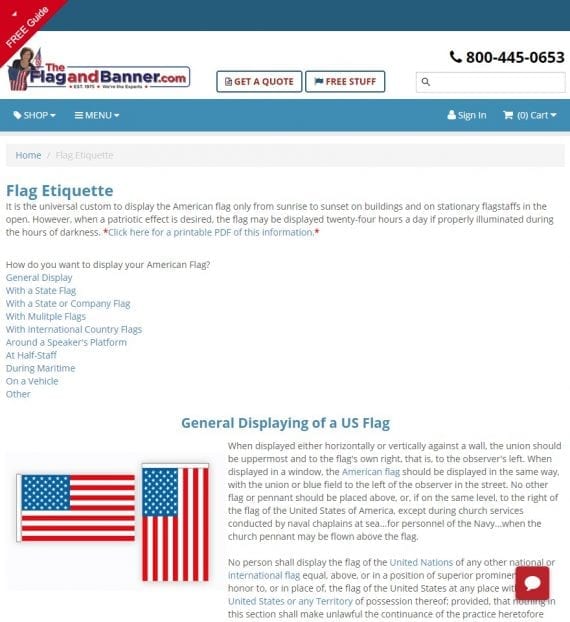
Flag and Banner’s etiquette page details how to display the U.S. flag properly.
If blogs take too much effort to sustain, consider a fact-based educational guide such as the one above from flag purveyor Flag and Banner. These resources typically stay current for long periods, requiring only occasional updating.
Flag and Banner’s guide ranks well in organic search because it’s thorough and contains illustrations that help shoppers understand how to display each flag type.
I’ve never encountered an ecommerce business that lacked educational topics. With practice, you’ll find topics everywhere. A question from a shopper could be a topic. Info from a manufacturer might be a topic. Keep your eyes open for learning opportunities, and you’ll never be short of topics to write about.
When you have more than one article in your resource section, create a hub-and-spoke model with a category-level page (the hub) that links to all of the resource pages (the spokes) logically.
How-to Guides
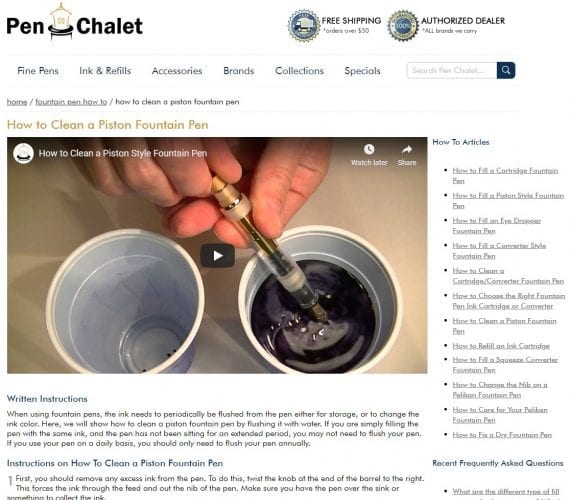
Pen Chalet’s how-to guides offer videos and step-by-step instructions with images.
How-to guides tend to be broken out into steps or sections. If a page could be titled “How to…,” “10 Steps to…,” or “10 Tips to…,” you’re probably looking at a how-to guide.
The image above shows a guide on how to clean a piston fountain pen, featuring a video and written instructions with still images in a traditional step-by-step format. With the rise of Google’s answer boxes, guides are an excellent way to increase brand visibility.
Consumers increasingly prefer videos for how-to content. Regardless, both text and video content can be arranged in the hub-and-spoke model described above.
FAQs
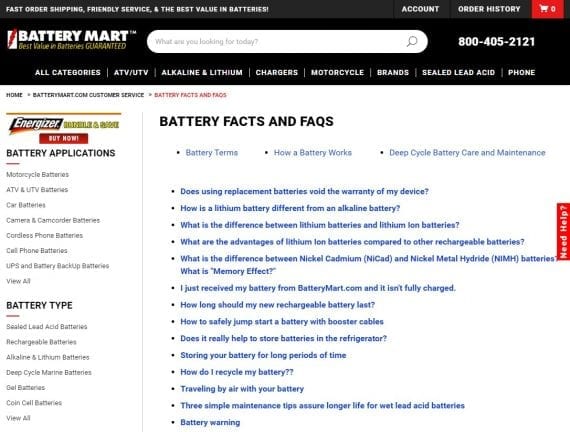
Battery Mart’s FAQ section answers common questions from shoppers.
Many sites have a section for frequently asked questions — FAQs. These snippets tend to answer purely transactional questions such as shipping speed and return policy.
But the Battery Mart example above shows an FAQ relevant to its product offerings.
FAQs are the strongest for SEO when each question links to a separate page for the answer. That enables each question-and-answer pair to be optimized individually. FAQs with all of the answers on a single page have more difficulty ranking.
Support Information
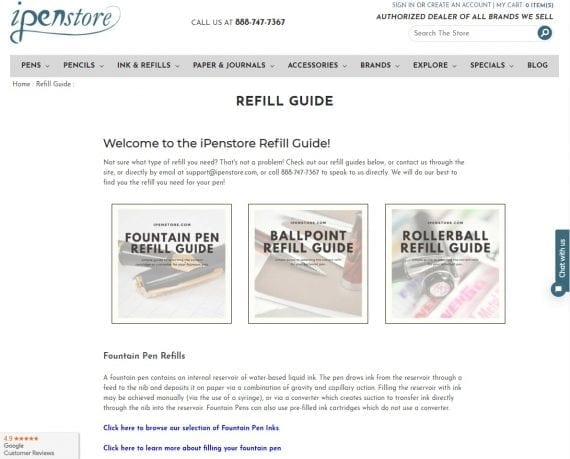
The refill guide at iPenstore directs shoppers to the parts they need.
Search engines are also likely to rank content that answers searchers’ informational intent queries. As a niche ecommerce business, iPenstore doesn’t need a huge support section. Its refill guide, above, likely siphons off calls to its customer service hotline — that’s the point, after all. It allows customers to find answers for product-related questions without picking up the phone.
Unfortunately, businesses don’t usually value or fund their support sections. Support content can be a way to snare new shoppers as well as entice lapsed customers back — if the experience is positive.
Idea Galleries
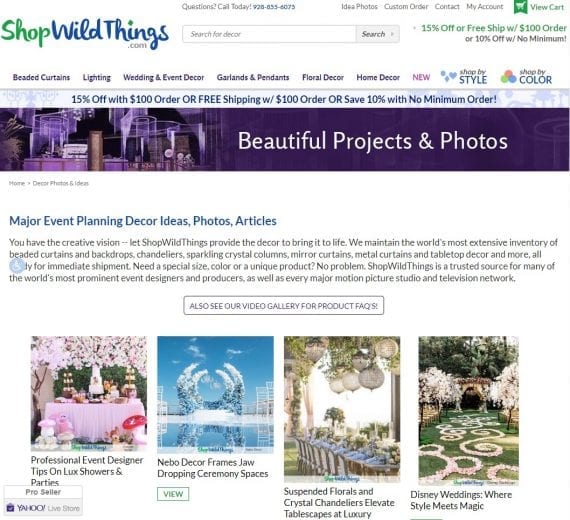
ShopWildThings wraps strong textual content around beautiful photography.
Businesses frequently waste the SEO potential of idea galleries by pasting a ton of images on a page with no supporting text. Without the expert commentary to provide context and pointers for executing the idea successfully, pretty pictures don’t provide value — not for shoppers and certainly not for SEO.
In the example above, ShopWildThings, an ecommerce business offering wedding and event décor, successfully merges ideas with the blog concept. The articles feature photos from customers, often by professional photographers. The text around the images describes how the products were used to achieve the look in the photo. Because it’s also natural to provide helpful links to those products, it’s a compelling way to increase internal linking.

